PORTRAITS: REFLECTED VISION – CACT | CANTON TICINO
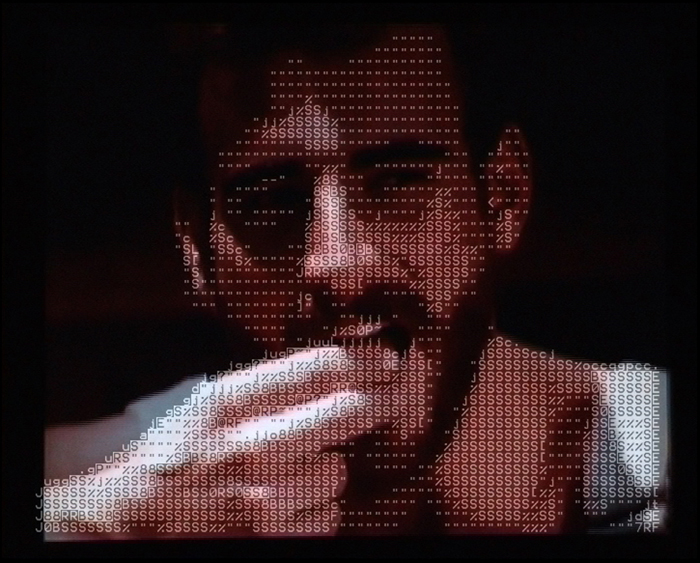
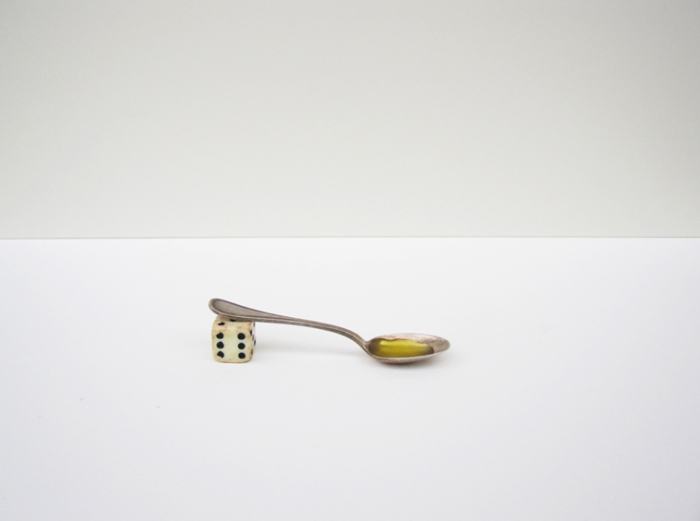
PORTRAITS: REFLECTED VISION
Jon Campbell, Andrea La Rocca
Project room: Pier Giorgio De Pinto_Strange Fruits
Vernissage: Saturday 3 December 2011 at 5.30 p.m.
3 December 2011 – 5 February 2012
[The Center remains closed from 23 December 2011 throughout 6 January 2012]
Fri-Sat-Sun: 2.00-6.00 p.m.
via Tamaro 3, 6500 Bellinzona -Switzerland
www.cacticino.net – info@cacticino.net – +41 (0)91 825 40 85
Following the exhibition REFLECTIONS OFF WATER SOFTEN IMPRESSIONS, whose topic coagulated around the concept of history and historical awareness, of travel, of wandering and of the diaspora as an indispensable osmotic evolution, PORTRAITS: REFLECTED VISION now sets out to tackle the universal theme of the portrait and the self-portrait: not through a strictly traditional, historical interpretation, but through one of analysis.
The artists showing are Jon Campbell (D, 1982), Pier Giorgio De Pinto (CH, 1968) and Andrea La Rocca (I, 1983).
Tackling the topic of the portrait is out of the question today without considering the late nineteenth and early twentieth centuries, whose concept of avant-garde rendered not only art itself subjective, but also necessarily how we look at and see an image. While what philosophy recognises in a portrait is a mere representation of reality, for early twentieth-century psychoanalysis the iconological approach to the image became more complex, despite taking part in the continuous fragmentation between the ego and the id, between reality and surrealism and/or hyperrealism.
As we now reposition ourselves within a mercurial landscape like that of artistic idiom, and in a period of major mystifications in the fields of communications, finances and, more generally, mere virtual reality, this process of interpretation has now become vital.
While on the one hand we have Jon Campbell who investigates the concept of identifying with the model portrayed, using the traditional medium of figurative painting, Andrea La Rocca occupies three rooms to amalgamate his sexual obsessions, as reflected in the behavioural portrait of a middle-class society (and its paradoxes), adopting an analytical approach to redefine behavioural and social identities. The three rooms he uses are
occupied respectively by the ‘male’, the ‘female’ and the ‘darkroom’, as the moment of erotic sublimation and of fusion between the genders, as well as between observer and artist. He uses a variety of media – photographs, drawings, video and elements of light – to recreate infinite spaces of inner perception within a finite space like that defined by the perimeters of a museum.
Pier Giorgio De Pinto brings several different media spaces together in his project entitled STRANGE FRUITS. Primarily, his specific working media are video projections and drawings in graphite on black paper. Mapping the body as a personal genius loci referred to a clearly identifiable psycho-geography is one of the themes on which the artist is working, drawing thematic inspiration from the television and cinema scene, as well as from the society that surrounds us. While television and mass communications media have inured us for years to the everyday and commonplace use of the body, De Pinto now calls our attention to the fundamental importance of artistic idiom for making an analytical elaboration of what has been functioning for years as a dominant iconography and a stereotype of human and social behaviour. His aim, then, is to provoke by restoring an iconological and political meaning to the image.
Three artists use three different idioms to achieve profound expressions, adopting an irreversible, circular and interchangeable manner to look, observe and represent the other, others and themselves: the society we live in and that sees itself reflected in us. Campbell achieves this with a pleasant, interesting retro-garde return to figuring and to the model to compenetrate; La Rocca by applying a constant process of performative marginalisation of the means of production within the confines of a fluid evolution of the installation/performance, and De Pinto by thwarting the increasingly marked dichotomy between real and virtual society and the production of stereotyped images, putting the observer’s vigilant eye back into his discourse.
Reflections by Mario Casanova, 2011 [translation Pete Kercher]

RITRATTI. LO SGUARDO RIFLESSO.
Jon Campbell, Andrea La Rocca
Project room: Pier Giorgio De Pinto_Strange Fruits
Vernissage: sabato 3 dicembre 2011 alle 17:30
3 dicembre 2011 – 5 febbraio 2012
[chiuso per festività natalizie dal 23 dicembre 2011 al 6 gennaio 2012]
Ve-sa-do_14:00-18:00
Dopo la mostra I RIFLESSI DELL’ACQUA LENISCONO I SEGNI, il cui tema si coagulava attorno al concetto di storia e di coscienza storica, di viaggio, di erranza e diaspora come indispensabile evoluzione osmotica, RITRATTI. LO SGUARDO RIFLESSO intende affrontare il tema universale del ritratto e dell’autoritratto: non già attraverso una lettura strettamente tradizionale e storica, bensì analitica.
Gli artisti in mostra sono Jon Campbell (D, 1982), Pier Giorgio De Pinto (CH, 1968), Andrea La Rocca (I, 1983).
Affrontare il tema del ritratto oggi non è possibile, senza considerare un tardo 800 e un 900 che hanno, attraverso il concetto di avanguardia, soggettivato non solo l’arte, bensì anche – giocoforza – la maniera di guardare e vedere un’immagine. Se la filosofia riconosce nel ritratto una mera rappresentazione del reale, per la psicoanalisi d’inizio secolo l’approccio iconologico all’immagine diviene più complesso, per quanto attiene alla frammentazione continua tra io e sé, tra reale e surreale e/o iperreale.
Riposizionarsi oggi entro un ambito inafferrabile come quello del linguaggio artistico, e in un’epoca di grandi mistificazioni comunicazionistiche, finanziarie e, più genericamente, meramente virtuali, diviene processo interpretativo necessario.
Se da un lato Jon Campbell si sofferma sul concetto di identificazione col modello ritratto attraverso l’uso di un mezzo tradizionale quale la pittura figurativa, Andrea La Rocca fonde, in tre sale, le sue ossessioni sessuali riflesse nel ritratto comportamentale di una società borghese (e dei suoi paradossi) attraverso un approccio analitico verso una ridefinizione delle identità comportamentali e sociali. Tre sale per, rispettivamente, il ‘maschile’, il ‘femminile’ e la ‘darkroom’ quale momento di sublimazione erotica e di fusione dei generi, nonché tra spettatore e artista. I mezzi ch’egli utilizza sono svariati, fotografie, disegni, video, elementi di luce a ricreare spazi infiniti di percezione interiore all’interno di uno spazio finito quale è il confine di un museo.
Pier Giorgio De Pinto, con un progetto dal titolo STRANGE FRUITS, riassume più spazi mediali. Proiezioni video e disegni con grafite su carta nera sono principalmente i suoi specifici mezzi di produzione. La mappatura del corpo come genius loci personale riferito ad una psico-geografia ben precisa è tra i suoi temi, cui l’artista sta lavorando prendendo spunto tematico dal mondo televisivo e dal cinema, o, anch’egli, dal societale che ci circonda. Se l’uso del corpo è stato per tanti anni banalizzato proprio dalla televisione e dal mezzo di comunicazione di massa, ecco che De Pinto ribadisce l’importanza fondamentale del linguaggio artistico per rielaborare analiticamente ciò che per anni ha funzionato come iconografia dominante e stereotipo del comportamento umano e sociale. Ridare quindi provocatoriamente un significato iconologico e politico all’immagine.
Tre artisti e tre linguaggi diversi per esprimere in maniera approfondita il guardare, l’osservare e il rappresentare in maniera irreversibile, circolare e intercambiabile, l’altro, gli altri e se stessi, la società in cui viviamo e che si guarda riflessa in noi. Campbell lo fa attraverso un piacevole e interessante ritorno retroguardista alla figurazione e al modello da compenetrare; La Rocca, attraverso un costante processo di performativa marginalizzazione dei mezzi di produzione entro un’evoluzione liquida dell’installazione/performance; De Pinto vanificando la dicotomia sempre più marcata tra società reale e virtuale, tra produzione delle immagini stereotipate, reinserendo nel suo discorso lo sguardo vigile dello spettatore.
Riflessioni di Mario Casanova, 2011

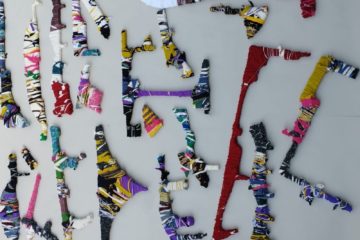
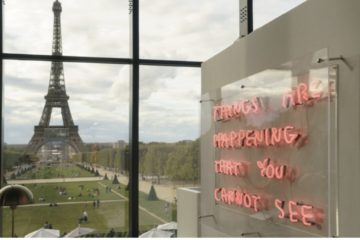
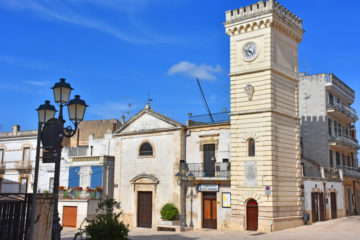
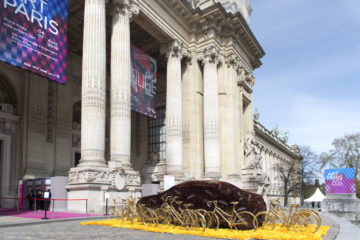

No Comment